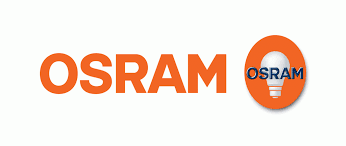Description

Facilio

Cepenergy Management
Comprehensive Overview: Facilio vs Cepenergy Management
Facilio and Cepenergy Management are platforms focused on optimizing building operations, often within the broader context of energy management and facility operations. These solutions aim to improve efficiency, reduce costs, and enhance the sustainability of facilities. Below is a comprehensive overview of each, including their primary functions, target markets, market share, user base, and key differentiating factors.
a) Primary Functions and Target Markets
Facilio:
Primary Functions:
- Integrated Facility Management: Facilio provides tools for managing building operations, including maintenance, energy usage, and tenant services.
- Energy Management: It incorporates real-time energy monitoring and analytics to optimize energy consumption and reduce costs.
- Predictive Maintenance: Utilizes IoT and AI to forecast equipment failures, thus preventing downtime and costly repairs.
- Sustainability Tracking: Offers features for tracking and improving sustainability metrics through data-driven insights.
Target Markets:
- Commercial Real Estate: Offices, retail spaces, and mixed-use buildings looking to optimize operations and enhance tenant experiences.
- Facilities Management Organizations: Companies that provide outsourced facilities management services to various sectors.
- Healthcare Facilities: Hospitals and clinics focused on compliance, efficiency, and safety.
Cepenergy Management:
Primary Functions:
- Energy Optimization: Focuses on energy data analytics, performance tracking, and optimization strategies.
- Demand Response Management: Enables facilities to participate in demand response programs, balancing supply and demand on the grid.
- Renewable Integration: Supports the integration of renewable energy sources to improve sustainability.
- Cost Analysis and Reporting: Detailed reporting tools that help in understanding energy costs and identifying areas for savings.
Target Markets:
- Industrial Facilities: Factories and manufacturing plants requiring efficient energy management to control costs.
- Utilities and Energy Providers: Organizations involved in energy distribution and management.
- Large Corporations: Enterprises across sectors that need to manage energy usage effectively on a large scale.
b) Market Share and User Base
Facilio and Cepenergy Management operate in a competitive market landscape characterized by several key players, including both specialized and broader enterprise solutions. Assessing market share and user base can be challenging without specific data, but general trends and insights can be provided:
-
Facilio tends to have a strong presence in commercial real estate and facilities management due to its comprehensive approach to facilities operation and maintenance. Its user base includes facility managers, operation teams, and sustainability officers in urban centers where real estate development is high.
-
Cepenergy Management often finds its niche within industries with substantial energy needs and utility sectors. Its user base primarily consists of energy managers, engineers, and operational executives focused on efficiency and cost reduction.
In general, both solutions appeal to organizations looking to streamline operations and enhance sustainability, with Facilio focusing more broadly on facilities management and Cepenergy Management honing in on energy-specific solutions.
c) Key Differentiating Factors
-
Scope of Services:
- Facilio offers a broader suite that encompasses general facilities management in addition to energy management, making it suitable for sectors requiring end-to-end facility solutions.
- Cepenergy Management specializes in energy-centric solutions, leveraging advanced analytics and optimization techniques to drive energy savings and efficiency.
-
Technology and Integration:
- Facilio employs IoT and AI technologies extensively to optimize various aspects of building management, emphasizing predictive maintenance and cloud-based integration.
- Cepenergy Management is keenly focused on integrating renewable energy and providing tools for demand response, catering to organizations participating in energy markets.
-
Customization and Flexibility:
- Facilio typically offers highly customizable solutions that can adjust to different facility management needs, providing value across diverse industries.
- Cepenergy Management delivers customized strategies for energy management and optimization, often tailored for sectors with intensive energy consumption.
Overall, Facilio and Cepenergy Management serve overlapping yet distinct markets, with each bringing unique strengths to the table—integrated facility operation versus targeted energy management.
Contact Info

Year founded :
2017
+1 804-307-5635
Not Available
United States
http://www.linkedin.com/company/facilio-inc

Year founded :
Not Available
Not Available
Not Available
Not Available
Not Available
Feature Similarity Breakdown: Facilio, Cepenergy Management
To provide an effective feature similarity breakdown for Facilio and Cepenergy Management, we will focus on the aspects mentioned: core features, user interfaces, and unique features. Since detailed product specifications may vary and can include proprietary information, this comparison will be generalized and based on typical features found in facility management and energy management software solutions. Here’s a possible analysis:
a) Core Features in Common
Both Facilio and Cepenergy Management offer features commonly seen in facility and energy management platforms. These typically include:
-
Real-Time Monitoring:
- Both platforms likely provide real-time monitoring capabilities for facility and energy management, giving insights into energy consumption and facility operations.
-
Data Analytics:
- They usually have analytics features that help analyze historical data to improve energy efficiencies and operational performance.
-
Automation:
- Automation of routine processes such as scheduling, alerts, and reports is a common feature, designed to enhance efficiency and reduce manual intervention.
-
Asset Management:
- Management of facility assets, including tracking, maintenance scheduling, and lifecycle management, is typically offered.
-
Reporting & Dashboards:
- Customizable dashboards and reporting tools that allow users to visualize data and create reports are often available.
-
Sustainability Tracking:
- Both may include features for tracking and managing sustainability metrics, such as carbon emissions.
b) User Interface Comparison
While specifics can vary with updates and different versions of the software, here's a general perspective on typical user interface comparisons:
-
Facilio:
- Known for its user-friendly interface that emphasizes ease of use, Facilio typically offers intuitive dashboards and a modern aesthetic that simplifies navigation and interaction for facility managers.
-
Cepenergy Management:
- Also likely offers a user-centric design, focusing on clear data visualization and easy access to key functionalities. The interface might emphasize technical detail, given its energy management focus.
Comparison: Both user interfaces are built to be user-friendly, but Facilio often targets broader facility management needs, while Cepenergy may focus more explicitly on energy management aspects, affecting visual design and interface layout.
c) Unique Features
Facilio:
-
Unified Platform for IoT Integration:
- Facilio is known for its robust IoT integration, which connects various building systems into a single platform for centralized control.
-
Predictive Maintenance:
- Utilizes machine learning algorithms to predict equipment failures and suggest maintenance actions proactively.
Cepenergy Management:
-
Advanced Energy Analytics:
- Offers in-depth energy analytics specifically tailored to improve energy efficiency, potentially with tools geared towards identifying energy-saving opportunities.
-
Demand Response Management:
- Features that focus on demand response programs might be more advanced, allowing for real-time load curtailment and energy usage optimizations.
Ultimately, while both Facilio and Cepenergy Management aim to optimize facility and energy management, they might differentiate themselves in focus areas such as IoT integration versus advanced energy-specific functionalities. Checking the latest product offerings and updates directly from the companies would provide the most accurate and detailed information.
Features

Facilities Management
Energy and Sustainability
Maintenance Management
Space Management

Energy Consumption Monitoring
Energy Monitoring
Sustainability Goals
Cost Management
Sustainability Initiatives
Best Fit Use Cases: Facilio, Cepenergy Management
Facilio and Cepenergy Management are both powerful tools in the realm of energy management and facilities management, but they cater to different needs and scenarios. Here's how each of them fits into different use cases, industry verticals, and company sizes:
a) Facilio: Best Fit Use Cases
1. Types of Businesses or Projects:
- Large Enterprises and Property Managers: Facilio is particularly well-suited for large scale enterprises and property management firms that manage multiple facilities or large building portfolios.
- Commercial Buildings: High-rise buildings, shopping malls, business parks, and other commercial infrastructures benefit greatly from Facilio's capabilities.
- Hospitality and Healthcare: Industries requiring stringent energy and facilities management due to high operational and maintenance complexities.
- Educational Institutions and Campuses: Universities and colleges can leverage Facilio to manage their vast infrastructure more effectively.
2. Specific Scenarios:
- Centralized Operations Management: Facilio excels in providing a centralized platform for facilities management across dispersed locations.
- Enhancing Operational Efficiency: Businesses looking to improve their operational efficiency and reduce costs through data-driven decisions.
- Sustainability and Compliance: Companies focused on meeting sustainability goals and adhering to compliance requirements in real estate.
b) Cepenergy Management: Preferred Use Cases
1. Types of Businesses or Projects:
- Small to Medium Enterprises (SMEs): Cepenergy is ideal for SMEs that do not have the scale of operations that large enterprises do but need robust energy management solutions.
- Renewable Energy Projects: Businesses involved in renewable energy generation and management can benefit from Cepenergy's specific features.
- Manufacturing and Industrial Companies: Enterprises needing detailed energy monitoring and management to enhance production efficiency.
2. Specific Scenarios:
- Energy Cost Reduction: Best suited for businesses that prioritize reducing energy costs and streamlining utility consumption.
- Monitoring and Analytics: When real-time monitoring and analytics are required to optimize energy use in particular facilities.
- Scalability in Energy Solutions: Organizations that need a scalable solution for energy data collection and analysis across smaller or medium setups.
d) Catering to Different Industry Verticals or Company Sizes
Facilio:
- Industry Vertical Flexibility: Facilio's platform supports a broad range of industries, from real estate to retail, offering customized solutions that meet diverse needs in facilities management.
- Scale: It targets large and complex operations often found in enterprise-level deployments, supporting scalability across vast infrastructure, often integrating various IoT devices and systems for comprehensive oversight.
- Advanced Features: Features like predictive analytics and machine learning tools cater to large clients with extensive data management and analysis requirements.
Cepenergy Management:
- Focused Industry Applications: While applicable in broad settings, Cepenergy particularly benefits sectors where energy consumption is a primary concern, like manufacturing and utilities.
- SME Focus: It's designed with the flexibility and affordability needed by smaller operations, making it accessible for companies with limited budgets but significant energy management needs.
- Ease of Use and Deployment: Cepenergy offers ease of integration and simpler solutions tailored to meet the specific energy concerns of smaller firms, ensuring efficient energy usage without the complexity of a larger facilities management platform.
In summary, Facilio is best for large-scale, complex facilities management needs across diverse industries requiring integrated solutions, while Cepenergy is ideal for smaller to medium-sized entities needing focused energy management and cost reduction features.
Pricing

Pricing Not Available

Pricing Not Available
Metrics History
Metrics History
Comparing teamSize across companies
Conclusion & Final Verdict: Facilio vs Cepenergy Management
To provide a conclusion and final verdict on Facilio and Cepenergy Management, we'll analyze various factors like features, usability, cost, scalability, integration capability, customer support, and user reviews.
Conclusion and Final Verdict:
a) Best Overall Value: Both Facilio and Cepenergy Management offer robust energy management solutions, but the choice of which provides the best overall value depends on the specific needs of the user or organization. Generally, if a user prioritizes a comprehensive, customizable solution with strong IoT integration and real-time facility data optimization, Facilio might provide better value. Conversely, if an organization focuses more on streamlined energy analytics with a strong user interface and cost-efficiency, they may find Cepenergy Management more beneficial.
b) Pros and Cons:
Facilio:
- Pros:
- Strong real-time data analytics and IoT integration.
- Highly customizable with a focus on operational efficiency.
- Effective for large-scale facilities that require detailed oversight.
- Offers predictive maintenance features, which can improve long-term cost savings.
- Cons:
- The complexity of features may lead to a steep learning curve.
- Higher upfront costs due to extensive customization and implementation processes.
- May offer more than required for smaller organizations with simple energy management needs.
Cepenergy Management:
- Pros:
- User-friendly interface with an emphasis on ease of use.
- Lower cost, making it accessible for smaller businesses and tight budgets.
- Focused on core functionalities that bring immediate energy-saving results.
- Cons:
- Limited customization options compared to Facilio’s offerings.
- Might lack some advanced features needed for large-scale industrial applications.
- Potential scalability challenges for rapidly expanding enterprises.
c) Specific Recommendations:
-
For Large Enterprises and Complex Facilities:
- Facilio is recommended for its greater customization, real-time data capabilities, and comprehensive facility management tools. The additional investment may pay off in operational savings and enhanced control over extensive facility networks.
-
For Small to Medium Businesses and Simple Energy Management Needs:
- Cepenergy Management should be considered, especially for businesses looking for cost-effective solutions with essential analytics and user-friendly functionalities.
-
For Users Prioritizing Ease of Use:
- Cepenergy Management may be favorable due to its simpler learning curve and quick implementation potential, which can be advantageous for companies with limited IT resources.
-
For Users Seeking Comprehensive Solutions with Future Expansion:
- Facilio might be more suitable for organizations that foresee growth and require a scalable solution that aligns with future expansions and more intricate energy management demands.
In summary, the choice between Facilio and Cepenergy Management is contingent on an organization's specific needs, resources, and strategic goals. Considerations should include the size and complexity of the facilities, budget constraints, and the importance of advanced features versus simplicity and cost-effectiveness.
Add to compare
Add similar companies



